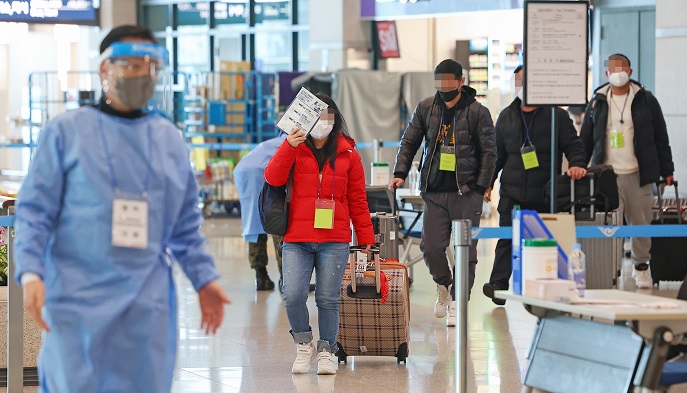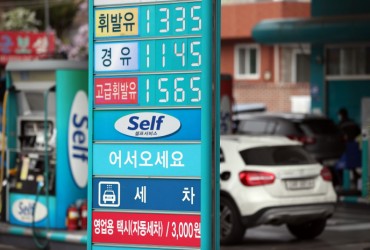
Travelers from China move to take COVID-19 tests at Incheon International Airport, west of Seoul, on Feb. 14, 2023. (Yonhap)
SEOUL, Feb. 15 (Korea Bizwire) — South Korea’s new COVID-19 cases came to around 15,000 on Wednesday to log a marked on-week decline amid a gradual virus downtrend.
The country reported 14,957 new infection cases, including 19 from overseas, bringing the total caseload to 30,384,701, the Korea Disease Control and Prevention Agency (KDCA) said.
It marked a slight growth from the previous day’s 14,371 cases but was down around 20 percent from the previous week’s 17,927 cases.
The KDCA reported 24 deaths from COVID-19, putting the death toll at 33,782.
The number of critically ill patients came to 228, down from 245 a day earlier.
The infection numbers have been on a steady decline despite concerns over a possible uptick following the removal of the indoor mask mandate late last month.
The country reported a total of 94,868 coronavirus cases last week, down 15.8 percent from a week earlier, and the number of deaths and serious cases also fell 34.7 percent and 20.7 percent, respectively, from a week ago, according to the KDCA.
The reproduction rate, which represents new infections estimated to stem from a single case, came to 0.81, staying below 1 for six weeks in a row, and the agency put the nationwide risk level of the virus at “low” for the fourth straight week.
The occupancy rate of hospital beds for serious patients remains at about 20 percent.
But the fatality rate inched up 0.02 percentage point to 0.11 percent, as senior citizens have accounted for a larger proportion of the total infections, the KDCA said.
“It is needed to boost the prescription of oral treatment pills to high-risk groups and vaccination for vulnerable groups,” senior interior ministry official Kim Sung-ho said during a meeting of the Central Disaster and Safety Countermeasures Headquarters.
The government plans to double the number of pharmacies that provide coronavirus pills to around 6,000 by the end of this month and to provide related location information, the official said.
The BN.1 omicron subvariant has been the dominant strain in South Korea, with its detection rate coming to around 60 percent of the total virus cases last week, the KDCA said.
Of the people found to be infected with the virus between Jan. 29 and Feb. 4, 24.85 percent of them were presumed to have been reinfected, it added.
As for cases from overseas, 75 out of 10,762 arrivals from China tested positive for COVID-19 last week.
Among those who came here for short-term stays, 1.5 percent tested positive and the figure came to 0.5 percent for South Korean nationals returning home from China and those who are seeking longer-term stays, the KDCA said.
Earlier in the day, the Chinese Embassy in Seoul announced a plan to resume short-term visa issuance for South Koreans this week, which has been suspended since last month in apparent retaliation against South Korea’s halt to the visa issuance for Chinese travelers, which was put in place to stem the inflow of the virus from the neighboring country.
Last week, South Korea resumed the visa issuance, given the waning virus trend.
(Yonhap)







